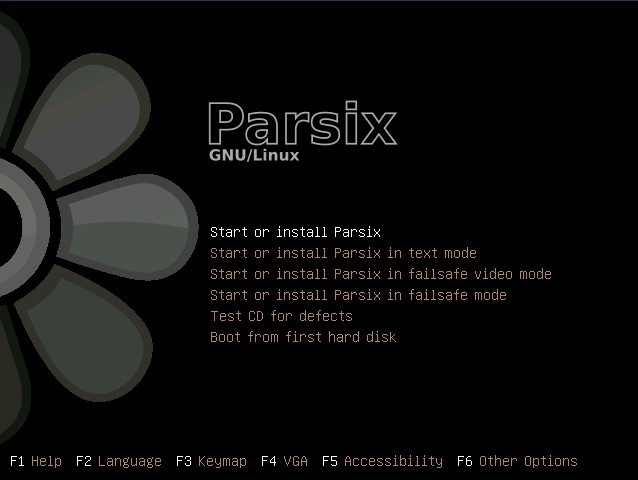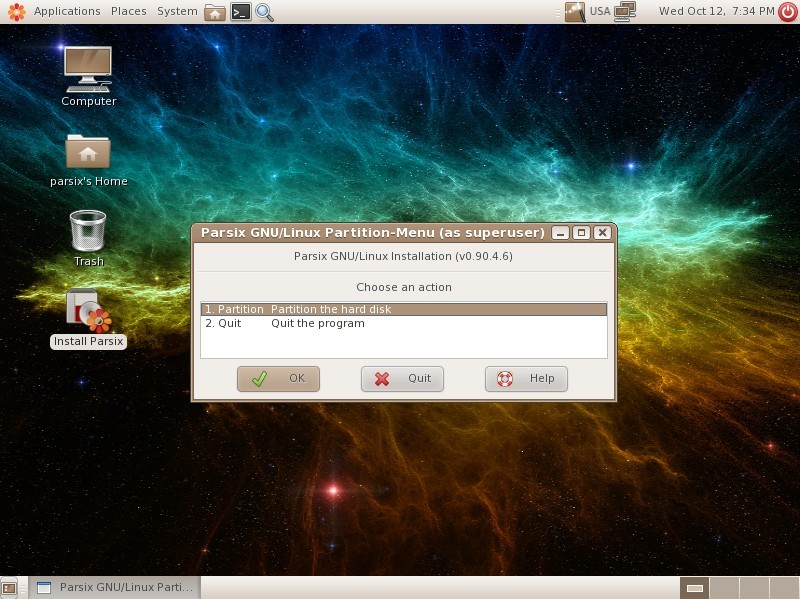COMP 3000 2011 Report: Parsix GNU/Linux
Part 1
Background
Parsix GNU/Linux is a complete GNOME-centric desktop oriented distribution based on KANOTIX and Debian (Baghumian 2011). It is designed to be used as a Live CD, Live USB or installed operating system in to hard disk drive. The aim of Parsix is to provide a ready to use, easy to install, clean and up-to-date desktop and laptop operating system for “newbie” users (Lynch 2009).
The developer of Parsix is Alan Baghumian who announced the first version of Parsix GNU/Linux on February 2005. Just a few days ago on August 14, 2011, the latest stable version Parsix 3.7 was released (LinuxBSDos.com 2011). Parsix GNU/Linux may not as popular as other community distributions, but it contains the most common and needed applications for desktop or laptop users. Parsix is a totally free operating system that users can download it from its official website (Hasanpour 2009). The size of Parsix is approximately 1 GB, which will not cost a lot of space on the hard disk.
As mentioned above, Parsix GNU/Linux is derived from KANOTIX and Debian. It is based on Debian “sid” and uses KANOTIX’s configuration scripts and kernel in live mode. Some major differences distinguish Parsix from KANOTIX and Debian, which including the following: To begin with, Parsix uses a classic installation system written in Bash. Moreover, it is optimized to be used on the i686 processors, which gives a better performance for desktop usage (Lynch 2009). In addition, Parsix minimize the usage of non-free software, this will be welcomed by users.
In this report, how Parsix GNU/ Linux is installed, some experience in using Parsix for simple use cases, as well as the usage evaluation of the distribution will be discussed.
Installation/Startup
The Parsix GNU/Linux comes as installable live DVD ISO image, so that it was installed in a virtual environment by using the VMware Player virtual machine. Once it was set up on the virtual machine and played, the boot menu shown up as below:
Simply choose “Start or install Parsix” option, and the installation view will show up, and then the “Install Parsix” icon was clicked to run the installation program. After that, the partition menu popped up to ask me to create partitions:
Then by clicking OK, the GParted partitioning tool will be run to create new partitions. Three partitions including a swap partition, a primary partition and a logical partition were created. Once the partition was done, the installation menu should show up by clicking the “Install Parsix” icon again. However, the installation did not pop up, the partition menu shown up instead. This means the installation step was not allowed. In this case, I realized that the problem might be related to the memory allocated to this virtual machine. Then I checked the installation guide of Parsix, it indicated that the memory should be at least 512 MB. Finally, the problem was solved by changing the memory in the virtual machine settings, and the installation menu popped up:

